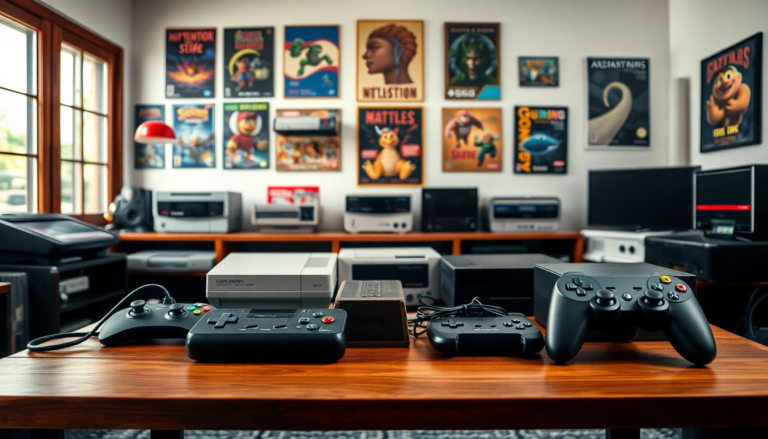Argomenti trattati
The video game industry has always been a hotbed of competition, a phenomenon often referred to as the ‘console wars.’ This term perfectly captures the fierce rivalry among console manufacturers, each eager to outdo the others with cutting-edge technology, savvy marketing, and an expanding library of games. But how did we get here? Let’s dive into the evolution of these console wars and highlight some key moments that shaped the competitive landscape.
The Genesis of Console Wars
The story of console wars begins way back in the late 1970s and early 1980s. Remember the Magnavox Odyssey? Launched in 1972, it was the first home console and kicked off the entire market. As more players joined the fray, the competition heated up. However, it was the fierce rivalry between Sega and Nintendo during the late 1980s and early 1990s that truly brought the term ‘console war’ into the spotlight. Sega’s bold marketing and innovative technology with the Sega Genesis allowed it to grab a significant slice of the market, challenging Nintendo’s long-standing dominance. The battle for supremacy sparked a whirlwind of marketing campaigns that not only showcased each company’s strengths but also aimed to undermine the competition.
Meanwhile, Nintendo wasn’t just sitting back. After the market crash of 1983, the company reimagined its Famicom console for American audiences, leading to the launch of the Nintendo Entertainment System (NES). This savvy move not only revitalized the U.S. video game industry but also re-established Nintendo as a household name. The ensuing competition between these two giants laid the groundwork for future console wars, influencing how manufacturers would approach marketing and product development.
Technological Advancements and Marketing Strategies
As technology progressed, the focus of the console wars shifted dramatically. The introduction of 16-bit processors was a game-changer. During this time, Sega’s marketing strategy emphasized its console’s superior graphics and processing power, positioning it as a step ahead of Nintendo’s 8-bit systems. Such aggressive tactics didn’t just attract gamers; they also shaped how consumers perceived the available consoles. The phrase ‘console war’ became closely associated with these heated marketing battles.
The launch of the Sega Genesis and its marketing strategies underscored the importance of building a strong brand identity. Sega targeted older audiences with edgy advertising and memorable characters like Sonic the Hedgehog, effectively differentiating itself from Nintendo’s family-friendly image. This strategic positioning allowed Sega to carve out a substantial niche in the market, illustrating just how vital targeted marketing is for a console’s success.
The Impact of New Entrants and the Evolution of Competition
The console wars took a dramatic turn with the entry of new players, most notably Sony and its PlayStation in the mid-1990s. The PlayStation’s use of CD-ROM technology allowed for larger and more complex games, setting a new industry standard. This shift not only ramped up competition among existing manufacturers but also forced them to innovate or risk being left behind. The emergence of the PlayStation marked a pivotal moment, shifting the focus from traditional console rivalry to a broader battle for market share across multiple platforms.
As technology continued to evolve, so did the strategies of these companies. The rise of online gaming and multimedia capabilities blurred the lines between gaming consoles and home entertainment systems. Manufacturers began to adopt a ‘blue ocean strategy,’ focusing on innovation and creating new market spaces rather than just competing in existing ones. This approach has allowed companies like Nintendo to thrive without directly challenging Sony and Microsoft on the same level.
Conclusion: The Future of Console Wars
Looking ahead, the dynamics of console wars are still changing. With the rise of digital distribution, subscription services, and cross-platform play, the traditional concept of console rivalry is being redefined. Companies are increasingly prioritizing value through software and services instead of just competing on hardware specifications. This shift mirrors a broader trend in the entertainment industry, where consumer preferences are driving manufacturers to adapt their strategies.
Understanding the intricate history of console wars offers valuable insights into the ongoing evolution of the video game industry. As competition becomes more complex, it will be fascinating to see how manufacturers navigate these changes and what new innovations will shape the future of gaming.

